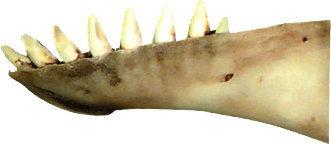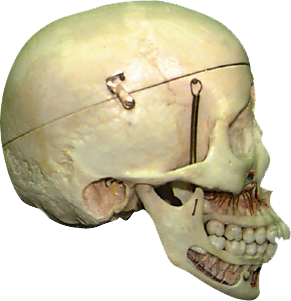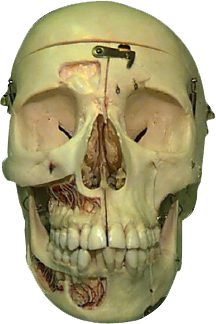Heterodont versus Homodont
Homodont
 Animals that have teeth that are all the same within the dentition are termed homodonts
Animals that have teeth that are all the same within the dentition are termed homodonts . An example of a dentition that is classified as homodont is the beluga whale (shown right). All of the teeth of the beluga are anatomically the same. They are conical in shape and interdigitate with each other. Dolphins and sharks are other examples of a homodont dentition.
. An example of a dentition that is classified as homodont is the beluga whale (shown right). All of the teeth of the beluga are anatomically the same. They are conical in shape and interdigitate with each other. Dolphins and sharks are other examples of a homodont dentition.
Beluga whale mandible (sagittal view)
Heterodont
Most mammals including man, however, have teeth that are of different types or classes . The permanent dentition of man is composed of four different classes of teeth (incisors, canines, premolars and molars). Man can therefore be classified as heterodont
. The permanent dentition of man is composed of four different classes of teeth (incisors, canines, premolars and molars). Man can therefore be classified as heterodont . The primary (deciduous) dentition of man has only three classes of teeth. Man can therefore be classified as heterodont.
. The primary (deciduous) dentition of man has only three classes of teeth. Man can therefore be classified as heterodont.
|
|
|
|
Human skull (sagittal view)
|
Human skull (frontal view)
|




